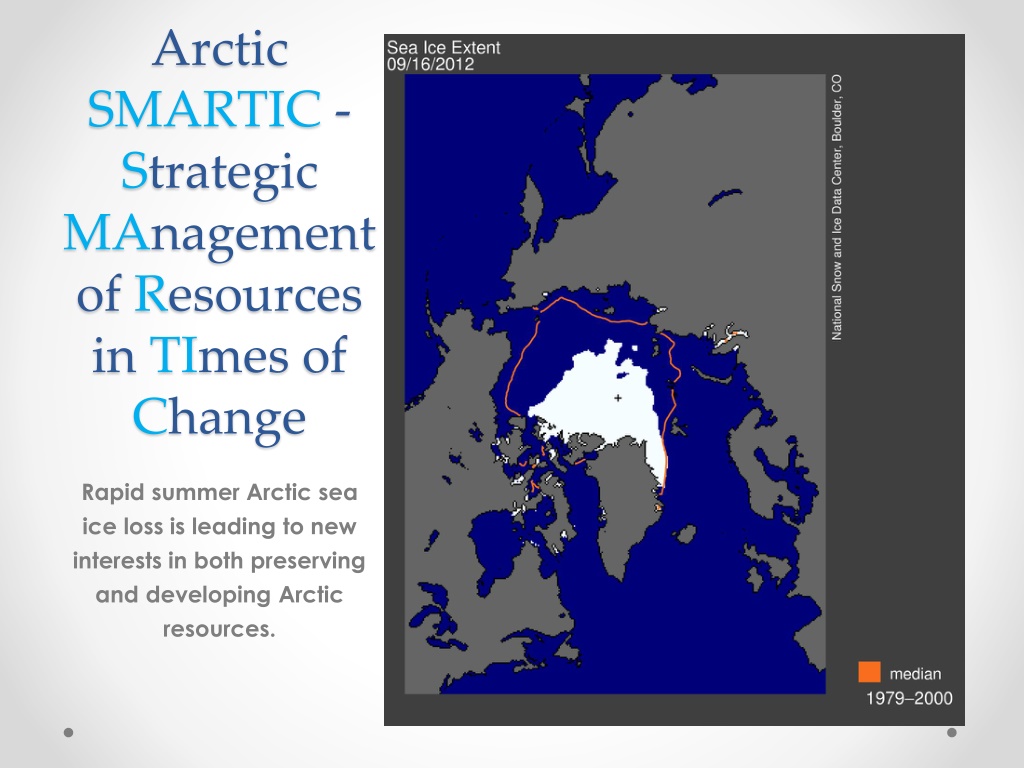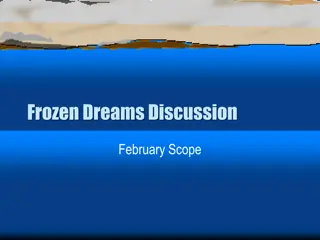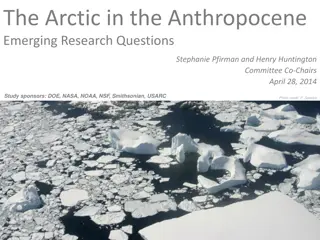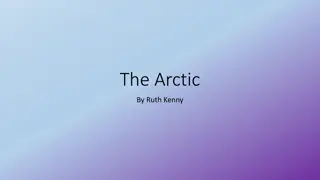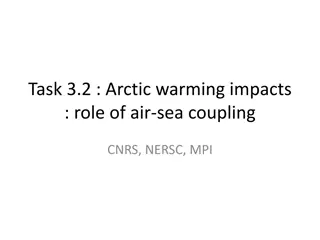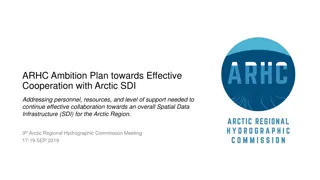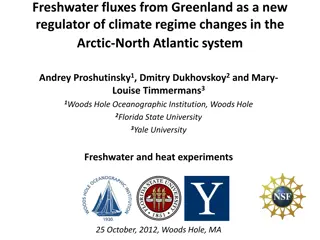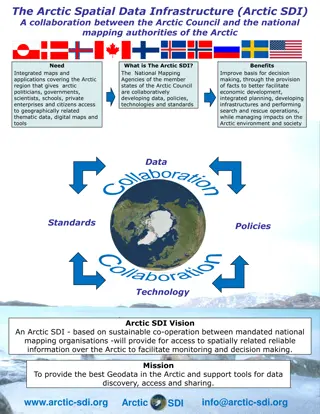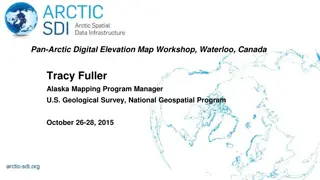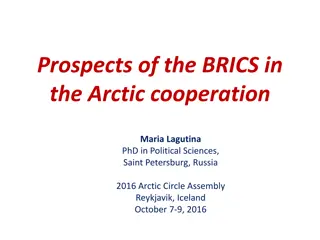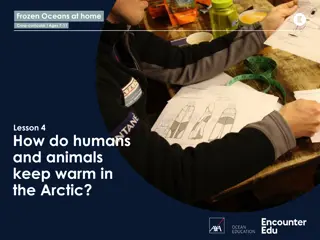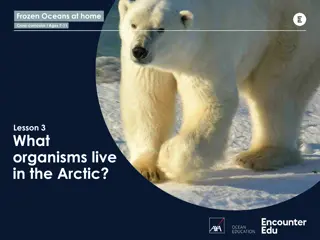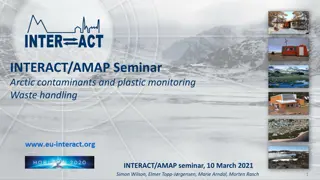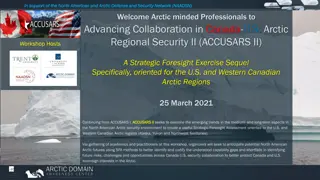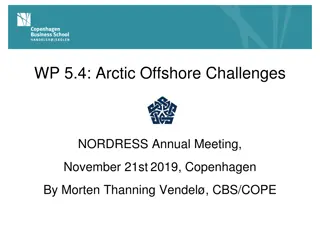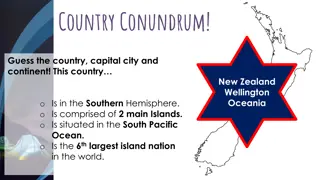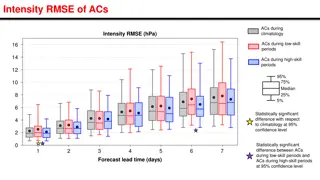Strategic Management of Arctic Resources in a Changing Environment
Rapid Arctic sea ice loss is reshaping interests in balancing resource preservation and development. Initiatives like SMARTIC focus on stakeholder collaboration, negotiation strategies, and future-oriented planning to address evolving challenges.
Download Presentation

Please find below an Image/Link to download the presentation.
The content on the website is provided AS IS for your information and personal use only. It may not be sold, licensed, or shared on other websites without obtaining consent from the author. Download presentation by click this link. If you encounter any issues during the download, it is possible that the publisher has removed the file from their server.
E N D
Presentation Transcript
Arctic SMARTIC - Strategic MAnagement of Resources in TImes of Change Rapid summer Arctic sea ice loss is leading to new interests in both preserving and developing Arctic resources.
Sea Ice Projections End of Winter End of Summer ~2010 Thickness Thickness ~2040 http://www.arctic.noaa.gov/future/sea_ice.html
Actual Resolution of Decades-Long Territorial Dispute Between Norway and Russia (Area 4) using Getting to Yes Negotiation Strategy and Marine Spatial Planning 1 = North Pole 2 = Lomonosov Ridge 3 = 200 mile Exclusive Economic Zone 4 = Russian-claimed territory (w/disputed area)
Marine Spatial Planning http://en.wikipedia.org/wiki/Marine_Spatial_Planning
Getting to Yes: Negotiating Agreement Without Giving In Invent options for mutual gain Insist on using objective criteria Focus on interests, not positions Invent a list of action if not agreement is reached Separate people from the problem Getting to Yes http://www.williamury.com/books/getting-to-yes/
SMARTIC Game Play: Phase I 1. The area to be managed is the Arctic marine region. 2. Based on the stakeholder information provided (readings and maps) and keeping in mind future changes in sea ice cover, players mark on the large map their top 3 areas of high priority interest and/or concern. 4. Once all players mark their areas of interest on the map, stakeholders resolve conflicts where interests overlap using the Getting to Yes strategy. 5. The goal is to develop a future-oriented (~2040) multiuse management plan for this region. 6. Note that your SMARTIC stakeholders represent user groups, not nations.
SMARTIC Game Play: Phase I Stakeholder Negotiation Points Technologies Double hulled ships Relief drilling wells Energy efficiency Limits on ballast water discharge Limits on black carbon output Noise reduction Ecosystem-based management Moratorium on activities Resources Money o Including investments in communities, i.e., jobs, infrastructure, development Political power Lawsuits Media Logistics Limited operation times/locations: o Avoid animal migration pathways o Suspend operations before seasonal sea ice regrowth Ice/storm preparedness training Emergency response plans o Including assistance from other stakeholders
SMARTIC Game Play: Phase II Crisis Scenario! Enormous Oil Leak Threatens Arctic Ocean New York Times November 14 2041 Not since the Deep Water Horizon spill more than 30 years ago has there been such a massive release of oil into the ocean. Arctic rim nations are scrambling to meet the technologic and economic challenges posed by the leak which occurred just as winter is setting in, hindering abilities to respond. Respond to crisis in the role of your stakeholder Negotiate new management strategies as needed
SMARTIC Debrief How did players resolve strategies within the different groups? o Did the strategies change from one region to another as the environmental conditions changed, or due to involvement of different stakeholders? o How did the crisis influence the strategies? Which stakeholders are typically in alignment? o Which stakeholders are typically in conflict? Which stakeholders stand to gain most? o Which stakeholders stand to gain least? If others played this game, what would they learn? Your affective response is important in learning how did you feel during and after playing this game? How effective was this activity in helping you to: o Identify key issues related to Arctic climate change? o Understand multiple stakeholder perspectives? o Engage in decision-making and problem-solving?
